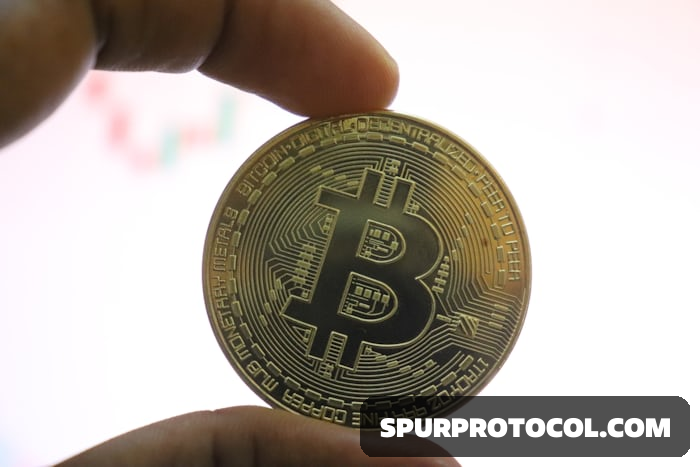WHY WAS BITCOIN CREATED.
The concept of Bitcoin first emerged in 2008, during an ongoing financial crisis. It aims to address perceived issues of trust and stability in traditional economic systems by eliminating the need for corporate banks and centralised financial institutions.
Bitcoin’s Proof of Work (PoW) consensus system and encrypted blockchain technology have provided a secure, transparent, and trustless transaction environment while preserving user anonymity.
Go Back

🕒 2:07 PM
📅 Jan 26, 2025
✍️ By vice254

Why Btc Was Started
Key Takeaways
The concept of Bitcoin first emerged in 2008, during an ongoing financial crisis. It aims to address perceived issues of trust and stability in traditional economic systems by eliminating the need for corporate banks and centralised financial institutions.
Bitcoin’s Proof of Work (PoW) consensus system and encrypted blockchain technology have provided a secure, transparent, and trustless transaction environment while preserving user anonymity.
Innovations like Bitcoin mining have helped to incentivise the network’s growth, while halving has controlled the currency’s supply, ensuring scalability and sustainability.
Bitcoin’s creation has significantly influenced the digital economy, demonstrating the potential for cryptocurrencies as both a store of value and medium of exchange.
Check out Crypto.com’s new BTC to USD Converter.
Introduction
Bitcoin (BTC), the most recognisable cryptocurrency, has the largest market capitalisation of all cryptocurrency tokens. But why does Bitcoin exist?
Bitcoin’s beginnings are as mysterious as they are revolutionary. Coming to light in the aftermath of the 2008 financial crisis, Bitcoin’s initial aim was to provide a secure and independent means to hold value and transact with anyone around the world without the assistance of banks, payment processors, or currency exchanges. Below, we dive deeper into understanding why Bitcoin was created.
Why Was Bitcoin Created?
Despite introducing something genuinely groundbreaking to the world, Bitcoin’s creator (or creators) decided to go by a made-up name — ‘Satoshi Nakamoto’. In the mid-2000s, a computer programmer or group of people posted regularly in cryptography forums under that moniker, becoming known for their posts about cryptography and security. They exhibited frustration at how online transactions worked and concern about pressing issues in the global economy. Nakamoto felt that an alternative could help people preserve control over their money in the digital age. Considering the simplicity of person-to-person cash transactions, Nakamoto sought something similar for the internet.
A Peer-to-Peer, Trustless Cash System
Nakamoto’s idea was a ‘trustless’ cash system, meaning a store of value that works just like money but doesn’t require anyone to place their trust in a third party to hold their money or manage transactions for them. To help explain it, think of Nakamoto’s admiration of simple cash transactions. In a typical scenario:
A shopper goes to a store, grabs an item off the shelf, and takes it to the clerk.
The clerk rings up the total cost.
The shopper takes out their wallet, grabs the appropriate amount of cash, and hands it to the clerk.
The transaction is complete. The shopper leaves the store with their item.
In this example of a person-to-person cash transaction, nobody except for the buyer and seller are involved. No bank is needed to process the transaction, so it’s simple and easy. Compare that to paying with a credit card: There are several additional parties involved in this process. Multiple security checks occur on both sides to ensure the transaction request is legitimate. Because of this overhead, additional fees exist, so the credit card transaction tends to be more expensive and inefficient than the more straightforward cash-for-product exchange.
This simple cash transaction is called ‘peer-to-peer’ (P2P) in the context of Bitcoin and other cryptocurrencies. Nakamoto wanted the system to help people transact directly online without the need for a bank, like with a person-to-person cash transaction. Nakamoto’s idea went a step further than the cash transaction, however; namely, not using cash at all. The proposed system wouldn’t exchange value using dollars, euros, or other central bank-controlled currencies. Instead, it would use a novel currency with a fixed supply and no central organisation to manage it.
Why did Nakamoto want to introduce a unique currency for Bitcoin’s system? According to the Bitcoin white paper, it all comes back to the idea of trust. Nakamoto believed that the only trust required for most transactions was between the buyer and seller, so they set out to prove this could happen online without the need for a financial institution. A limited currency with no central manager would also let the market dictate its value without the possibility of intervention.
Bitcoin Increased Trust by Removing…Trust?
The actions of financial institutions leading to the 2008 financial crisis resulted in a lot of blame and distrust. Meanwhile, the actions of central banks made many experts feel that the global economy had become too dependent on financial institutions. Nakamoto’s alternative solution came along at just the right time, and it’s part of the reason that Bitcoin and other cryptocurrencies have skyrocketed in popularity.
Nakamoto’s idea was a reaction to the many challenges people were facing in the economy. The proposed solution to remove the concept of trust from the equation was both novel and enticing. While that may sound nonsensical, Nakamoto didn’t mean all forms of trust. The context for this thesis was Nakamoto’s view that there are challenges in trusting that central banks would sufficiently protect the value of a holder’s money. While there was plenty of scepticism at the time, with Bitcoin, Nakamoto suggested something more powerful to replace the traditional system with something people could trust more: proof.
